Re: AMSOIL
Thank you Paul. Replied by blog Admin
| Home > Your Dealer Pages > AMSOIL Blog | Content Disclaimer |
 
|
 |
Saturday,August 29,2015
How long should the water pump in my car last?
#Automotive experts say the service life of most original equipment water pumps should be 100,000 miles or longer. Some cheap replacement water pumps, however, may not last 30,000 miles before they start to leak. Several factors can shorten the life of any water pump. These include internal corrosion in the cooling system (old neglected #coolant that is worn out and should have been changed), as well as cavitation wear (which can be a problem with some water pumps that have plastic impellers). The pump shaft is supported by bearings, and there is usually a ceramic seal around the shaft. #Antifreeze contains lubricants for the shaft bearing, as well as corrosion inhibitors to prevent internal rust and corrosion.
But these additives eventually 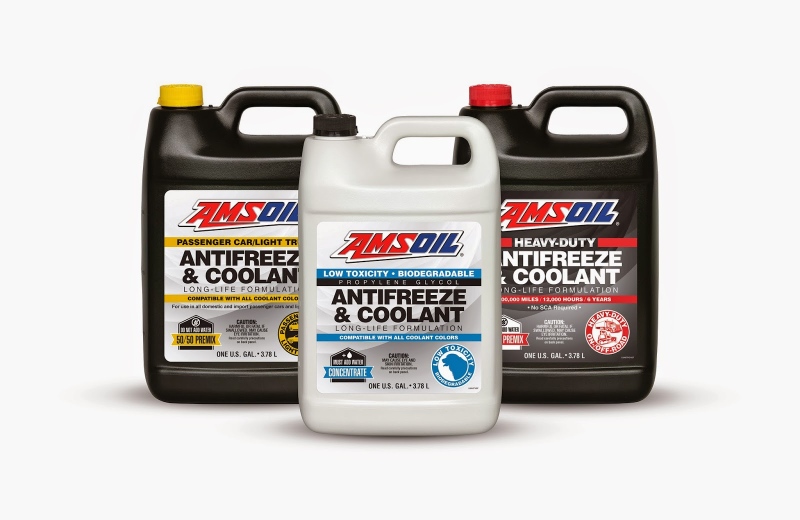 wear out over time. If the coolant is worn out or dirty, it will shorten the life of the water pump’s bearings and seals, as well as other cooling system components.
wear out over time. If the coolant is worn out or dirty, it will shorten the life of the water pump’s bearings and seals, as well as other cooling system components.
Get yourself a high quality antifreeze such as: #AMSOIL low toxicity antifreeze and coolant is recommended for 150,000 miles or five years, whichever comes first, in passenger cars and light trucks and 600,000 miles, 12,000 hours of operation or six years, whichever comes first, in heavy-duty and off-road applications.
And..... it is biodegradable. Its low toxicity limits the threat to children and animals.
Check it out: AMSOIL Antifreeze
Monday, June 29,2015
How extreme heat can affect your engine

The average operating temperature of a passenger car/light truck engine is up to 235ºF, and higher under heavy loads.  Motorists are becoming more familiar with the technologies responsible for this increased heat, specifically turbochargers and direct fuel injection. Automakers are designing engines using these performance-enhancing technologies to keep pace with increasingly strict fuel economy and emissions standards. Extreme heat, however, can lead to a host of problems, all of which reduce engine performance and life.
Motorists are becoming more familiar with the technologies responsible for this increased heat, specifically turbochargers and direct fuel injection. Automakers are designing engines using these performance-enhancing technologies to keep pace with increasingly strict fuel economy and emissions standards. Extreme heat, however, can lead to a host of problems, all of which reduce engine performance and life.
Deposits & Sludge
Heat can quickly break down motor oil, creating deposits on the intake valves, which impede airflow into the engine and contribute to poor sealing of the combustion chamber. This can lead to rough idle, misfire and reduced power and fuel economy.
Extreme heat depletes the additives sooner, altering the oil’s chemistry and preventing it from lubricating, cooling and protecting as designed. Sludge can form, which clogs narrow oil passages and prevents oil from reaching vital components, causing wear. Preventing sludge is particularly important in engines that use variable valve timing (VVT). Intricate parts sensitive to sludge can fail to operate properly, resulting in reduced performance.
Testing done by an independent, third-party lab demonstrates AMSOIL Signature Series 5W-30 Synthetic Motor Oil’s superior extreme-heat resistance compared to a leading conventional oil. Signature Series’ superior heat resistance resulted in 81 percent fewer 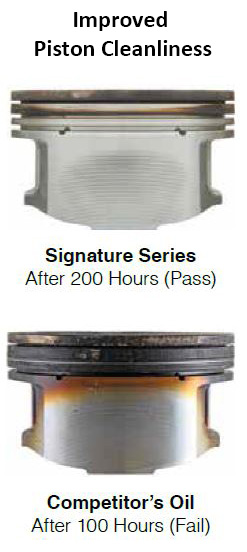 deposits (5 times cleaner) than the conventional oil.
deposits (5 times cleaner) than the conventional oil.
Oil Consumption
When oil volatilizes, the lighter molecules evaporate, leaving behind the heavier components. This leads to viscosity increase, which makes the oil more difficult to circulate and reduces fuel efficiency. You may have experienced this when your car “uses” oil and requires frequent top-offs. Volatilization also creates emissions that contribute to air pollution.
If enough motor oil is consumed, eventually there may not be enough to reach all the complex parts of the engine, which can potentially cause damage.
Signature Series Synthetic Motor Oil demonstrated 38 percent less consumption than the conventional oil, reducing frequent top-offs.
The Double-Length Sequence IIIG Engine Test Study offers additional proof of performance. After 200 hours, Signature Series scored 86 percent better for piston deposits compared to industry standards for 100 hours, easily passing the test.
Signature Series’ high-performance additives and quality base oils offer improved resistance to heat, maximizing the performance and life of your engine and keeping it clean.
Monday,June 1,2015
Low-Volatility Motor Oil Helps Unlock Your Vehicle’s Performance
Modern engines, particularly those equipped with performance-enhancing technologies like direct fuel injection and turbochargers, generate increased heat compared to their predecessors. At elevated temperatures, such as during severe service or when driving in hot summer weather, the oil’s lighter-weight molecules can volatilize, or literally “boil off.” The more volatile a lubricant is, the lower the temperature at which the lubricant will begin to evaporate. The more it evaporates, the less oil is left to protect equipment and the faster a user must replace the lost oil. You may have experienced this phenomenon by owning an automobile that “uses” motor oil in irregular intervals.
olatility affects more than the rate of oil consumption. When light elements in oil evaporate from heat, the oil’s viscosity increases. This thicker oil forces the engine to work harder, resulting in several problems, including the following:
• Reduced performance
• Reduced fuel economy
• Poor cold-temperature starting
• Increased engine deposits
• Out-of-balance oil formulation, potentially leading to a higher concentration of additives than designed
The most common method used in measuring oil volatility is the NOACK Volatility Test (ASTM D 5800). But that hasn’t always been the case. Originally developed and used in Europe, the NOACK test was not commonly used for lubricants until AMSOIL President and CEO Al Amatuzio pioneered its use for automotive motor oils in 1985. Previously, a lubricant’s flash point was the primary way to approximate an oil’s volatility. The NOACK test reports the percentage of an oil’s weight lost due to evaporation. Lower values equal better performance in the test.
When AMSOIL began using the test, it was common for competitors’ conventional oils to demonstrate a volatility loss in the 17-25 percent range. In contrast, the volatility loss of AMSOIL synthetic motor oil was often less than half that.
Currently, API SN and ILSAC GF-5 performance classifications require weight lost due to volatility to be no greater than 15 percent for all viscosity grades of motor oil. General Motors’ proprietary dexos1 motor oil specification is more stringent, requiring no greater than 12 percent weight lost.
AMSOIL synthetic motor oils are more stable and heat-resistant than conventional oils. They resist volatility to resist deposits and oil thickening, maximizing fuel economy and engine performance and life.
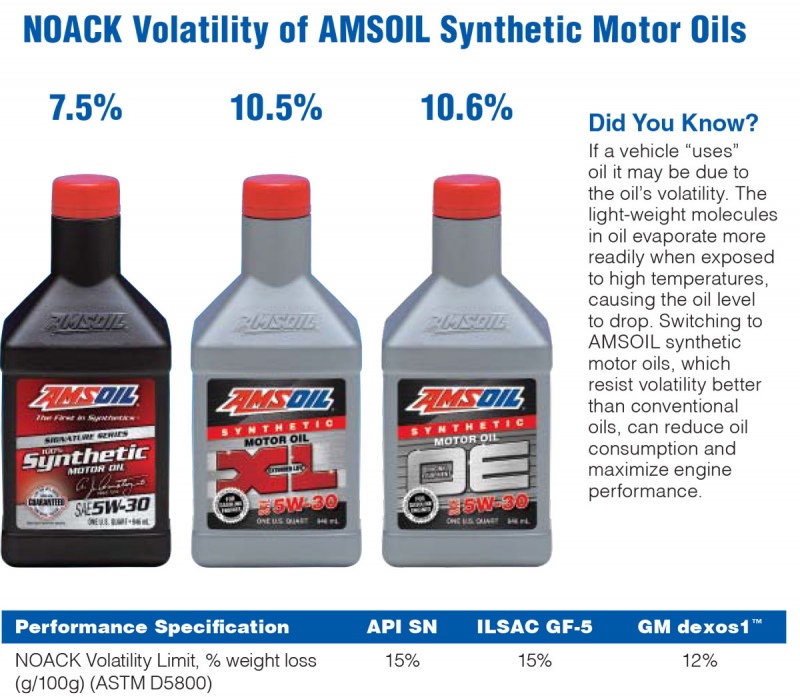
Tuesday, May 19, 2015
AMSOIL Synthetic Metric Motorcycle Oil: New Look, Same Great Product
 |
AMSOIL 10W-30 and 10W-40 Synthetic Motorcycle Oil have become AMSOIL 10W-30 and 10W-40 Synthetic Metric Motorcycle Oil. The names and packaging have changed, but the formulations remain the same. AMSOIL Synthetic Metric Motorcycle Oil delivers superior performance for metric sport, cruiser and touring bikes.
• Smooth, confident shifts
• Cool, clean performance
• Premium wear protection
Sport Bikes
AMSOIL Synthetic Metric Motorcycle Oil’s advanced synthetic technology maximizes engine responsiveness while delivering excellent wet-clutch compatibility for smooth shifts. The high speeds and rpm at which sport bikes travel can cause oil to foam. AMSOIL Synthetic Metric Motorcycle Oil controls foam, helping you confidently push the red line for maximum speed, acceleration and cornering ability.
Metric Cruisers
AMSOIL Synthetic Metric Motorcycle Oil delivers smooth, confident shifts and excellent wear protection for metric cruisers. By resisting extreme heat and helping cool hot engines, it promotes peace of mind and confidence whether cruising down the highway or showing off your ride at the rally.
Touring Bikes
AMSOIL Synthetic Metric Motorcycle Oil helps enhance reliability by delivering superior engine protection. Its outstanding performance provides the security of knowing your bike is going to provide trouble-free operation mile after mile. It extends drain intervals to up to twice the bike manufacturer’s recommendations, allowing you to enjoy peace of mind when you’re far away from home and unable to stop for an oil change. AMSOIL Synthetic Metric Motorcycle Oil’s wet-clutch compatibility enables smooth shifts for a comfortable ride.
Monday, April 27, 2015
Can I Mix Synthetic and Conventional Oil?
With synthetic lubricants continuing to grow in popularity, the question of whether synthetics and conventional oils can be safely mixed often arises. Many of us are guilty of having mixed different types of motor oil with reckless abandon back in the day. A dash of synthetic blend to top-off one month and maybe a shot of cheap conventional oil the next.

So, yes, you can safely mix synthetic and conventional oil. But barring an emergency, it’s not a great idea.
All motor oil, whether synthetic or conventional, is a combination of base oils and additives. Synthetic base oils are manufactured using a process that removes the impurities inherent to conventional base oils. Synthetics typically contain higher-quality additives, too. So, in the end, conventional and synthetic oils are comprised of the same, compatible components – it’s just that the components in synthetics are much higher quality. While you can safely mix synthetic and conventional oils, you’re doing nothing more than diluting the performance of the synthetic oil.
You may not have a choice in some cases. If you’re traveling, for example, and suddenly find your engine low on oil, cheap conventional oil may be the only option at the gas station alongside the highway. While it’s safe to top-off an engine that normally uses AMSOIL synthetic motor oil with conventional oil, we recommend changing the oil at your earliest convenience. In fact, AMSOIL does not support extended drain intervals where oils have been mixed.
When you’re using the best oil available, why add anything to it?
Monday, April 13, 2015
How Do I Switch from Conventional to Synthetic Oil?
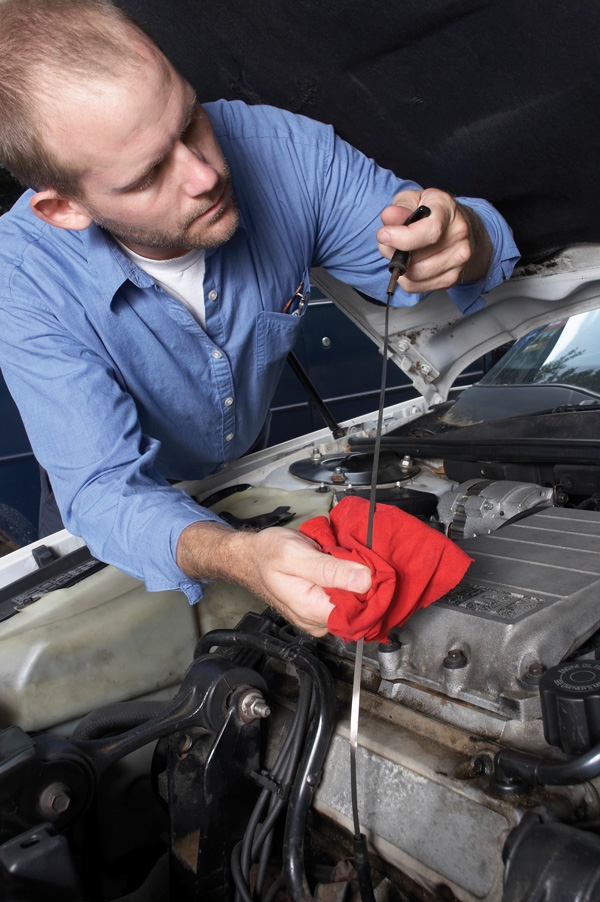 synthetic motor oil causes issues in older engines, particularly oil leaks.
synthetic motor oil causes issues in older engines, particularly oil leaks.
Facts have since replaced these outdated ideas about synthetics causing engine problems. The use of synthetic lubricants is growing rapidly because properly formulated synthetics offer benefits well beyond what conventional and synthetic blend products can provide. Many new passenger car and light truck vehicles come factory filled with synthetic lubricants – not just high-performance sports cars.
 use AMSOIL Engine and Transmission Flush, the cleanup is more immediate and helps ensure the engine is clean and free of any accumulated contaminants.
use AMSOIL Engine and Transmission Flush, the cleanup is more immediate and helps ensure the engine is clean and free of any accumulated contaminants.
Thursday, March 26, 2015
What is "Stiction"?
 By now you’ve inevitably seen this term in turbo diesel enthusiast magazines. And if you own a Ford Powerstroke 6.0L diesel engine, then you likely have experienced it. Stiction… it’s a combination of two words. Static and Friction. What it really means is that there are two components touching each other and a specific force is required to get them to move relative to each other. Like your pen resting on your desk. It requires a certain amount of force to get your pen to slide across your desk.
By now you’ve inevitably seen this term in turbo diesel enthusiast magazines. And if you own a Ford Powerstroke 6.0L diesel engine, then you likely have experienced it. Stiction… it’s a combination of two words. Static and Friction. What it really means is that there are two components touching each other and a specific force is required to get them to move relative to each other. Like your pen resting on your desk. It requires a certain amount of force to get your pen to slide across your desk.
Stiction has been a marketing term in the turbo diesel market for about the past 6-8 years now with the issues that Ford has seen with their 6.0L diesel engine. It’s a HEUI motor that, unfortunately, Ford made a poor decision to crank up the fuel pressure while utilizing similar injectors to the 7.3L diesel and they just aren’t capable of handling the pressure. So what happens is the solenoid on the injector that controls when the injector fires wears and gets sloppy. That wear puts it into a binding condition and the injector control is lost. The net result is poor idle and throttle response.
So what have some savvy entrepreneurs done? They’ve come out with a product to improve on the situation. Unfortunately the problem is irreversible. You cannot replace wear with chemistry. So can it make it better for the short term? Yes. However it is truly short term and typically ends in injector replacement.
What is the magic chemistry in a small bottle that costs so much? It is a combination of detergent and friction modifier. The detergent goes in there and cleans up any deposits in the oil side of the injector to ensure the solenoid can fire as smooth as possible. The friction modifier goes in there and coats the two metallic components and provides a more slippery surface so that the increased clearance between the two of them results in less binding. Unfortunately this method doesn’t last that long and you have to either keep adding this special juice or just replace the injectors.
I’m sure if you are a 6.0L owner you are wondering what I could have done differently. Unfortunately, based on the design and pressures, I’m doubting whether there is a foolproof method to eliminate the problem. But there are ways to lessen the pain and improve on the longevity of those injectors.
First, you want to choose a high quality synthetic diesel engine oil, like AMSOIL, to ensure your injectors are staying clean and the oil is providing the best wear protection possible. Regular oil change intervals using a high quality oil filter is step two to this important process. And finally if you are trying to keep the oil side of the injector clean you better think about the nozzle of the injector and keeping that fuel flowing as Ford intended. Using a concentrated dose of diesel fuel additive, like AMSOIL Diesel Injector Clean, will help keep that injector flowing like new. One more thing for northern climate enthusiasts to consider is engine oil viscosity. Since the HEUI injector uses engine oil to build fuel pressure it is very important to ensure the viscosity of the oil is suitable to promote development of proper fuel pressure. Take a look into your owner’s manual the next time you are in the garage. Your book will tell you that a 5W-40 or 15W-40 oil is recommended in most conditions, however if the temperature drops into the freezing range, Ford recommends you change to a 10W-30. No mystery why that is. The lower viscosity of the 10W-30 will flow more freely in cold temps and help develop fuel pressure much easier. Something to consider as you plan your oil changes throughout the year. Perhaps a viscosity change in the fall is the right answer for you. Whatever you choose to do, be confident that AMSOIL has a full line of high performance turbo diesel products for your truck. Take a closer look at Shop by diesel
New AMSOIL formulation for Victory® & Indian® Motorcycles

Victory® and Indian® motorcycles have stormed the market in recent years, presenting riders with American V-Twin bike options beyond those offered by Harley-Davidson®.
Victory is the second-largest seller of heavyweight motorcycles. Riders value the modern look, innovative features and premium quality of Victory motorcycles, as well as the opportunity to showcase their rebellious attitudes and individuality.
Indian is a classic American motorcycle brand, relaunched in 2013 with bikes that incorporate a classic look with modern features. Riders value the classic look, premium quality and attention to detail offered by Indian, as well as the American spirit inherent in the brand.
New 20W-40 Synthetic V-Twin Motorcycle Oil
Much like Indian and Victory owners, AMSOIL values performance and individuality, setting itself apart from the competition by manufacturing the most advanced, highest performance lubricants on the market. New AMSOIL 20W-40 Synthetic V-Twin Motorcycle Oil (MVI) is formulated to provide premium protection for Victory and model-year 2013 and newer Indian motorcycles. It is the only full-synthetic 20W-40 motorcycle oil on the market, presenting riders a premium alternative to Indian- and Victory-branded semi-synthetic oils. Indian and Victory motorcycles incorporate a shared sump, and AMSOIL 20W-40 is formulated to provide outstanding protection for engines and transmissions. It is absolutely shear stable, keeping motorcycles well-protected even in extreme heat conditions.
AMSOIL 20W-40 Synthetic V-Twin Motorcycle Oil provides peace of mind, confidence and security by eliciting maximum performance out of bikes and delivering second-to-none protection in even the most severe riding conditions. It offers the following premium protection and performance benefits:
· Delivers excellent wear protection
· Reduces friction and heat, keeping bikes running cool
· Helps prevent damaging sludge and carbon deposits
· Provides extreme-pressure protection for gears and chains
· Delivers excellent wet-clutch performance
· Catalytic-converter compatible
Applications
AMSOIL 20W-40 Synthetic V-Twin Motorcycle Oil is recommended for use in air- or liquid-cooled Victory, Indian and other four-stroke motorcycles calling for a 20W-40 motor oil. It meets API SM and JASO MA specifications, providing outstanding protection for engines and transmissions.
Change Intervals
AMSOIL 20W-40 Synthetic V-Twin Motorcycle Oil is recommended for up to 2X the motorcycle manufacturer-recommended change interval or one year, whichever comes first.
Tranny and Primary Fluids Join Lineup of AMSOIL Synthetic Motorcycle Lubricants
Despite snow on the ground and cold in the forecast, our minds at AMSOIL are on motorcycles this week. Daytona Bike Week, “The World’s Largest Motorcycle Rally”, kicks off March 6 in Daytona Beach, Fla., marking the unofficial start to the season.As the Official Oil of Daytona Bike Week, AMSOIL will be featured prominently during the rally. In addition to new AMSOIL 20W-40 Synthetic V-Twin Motorcycle Oil, introduced earlier this week, we’re adding two other great products to the lineup of AMSOIL synthetic motorcycle lubricants just in time for the riding season.
Some bikers prefer using separate primary and transmission fluids rather than multi-functional oils designed to protect the primary, transmission and engine. AMSOIL Synthetic V-Twin Transmission Fluid and AMSOIL Synthetic V-Twin Primary Fluid are perfect for bikers who prefer a dedicated lubricant over a multi-use product.
AMSOIL Synthetic V-Twin Transmission Fluid’s frictional properties deliver smooth shifts and help quiet transmission noise.
• Protects against gear & bearing wear
• Delivers smooth shifts
• Helps eliminate loud thunks and gear noise
AMSOIL Synthetic V-Twin Primary Fluid’s balanced formulation delivers consistent clutch feel for confident starts, helping you avoid killing the engine. It also protects components against wear to help you get the most years out of your bike.
• Delivers consistent clutch feel for confident starts
• Helps prevent clutch slip
• Helps riders easily find neutral
• Provides smooth acceleration
Before you hit the road, check out all the AMSOIL products for motorcycles. And get the season off to a rousing start.

AMSOIL Synthetic Lubricants Protect Hardworking Diesels

The term “diesel” still conjures a host of negative connotations to some: loud, smelly, smoky, dirty. Such unflattering descriptions may have been apt years ago, but those in the know realize today’s diesels no longer fit the stereotype. And judging by the numbers, increasingly more drivers are discovering the truth about diesels.
Data compiled by Hybridcars.com and Baum and Associates reveal that U.S. clean-diesel car sales jumped 25 percent during the first six months of 2014. An impressive increase, but even more so when considering the overall car market increased just 4.2 percent during the same time. Even more remarkable, increased sales have come during an economic recessionary period during which, until recently, diesel fuel prices have trended upward.
“Clean diesel” is a term automakers use to distinguish today’s cleaner, quieter diesels from their loud and smoky predecessors. Technically, a clean-diesel engine is no different from any other diesel engine. The differences lie in the fuel they use and their sophisticated exhaust-treatment devices.
In 1993, the government limited diesel fuel sulfur content to 500 ppm – known as low-sulfur diesel. In 2006, ultra-low-sulfur diesel became available, which has a maximum sulfur level of 15 ppm. By 2010, the EPA required that 100 percent of highway diesel fuel be ULSD.
More changes to the diesel fleet came in 2007. To meet EPA emissions standards, on-road diesel vehicles model-year 2007 and newer come with exhaust-treatment systems designed to reduce harmful emissions. These systems range from exhaust gas recirculation (EGR), diesel particulate filters (DPF), in-line regeneration and others. Though they all function differently, their purpose is the same. They, along with ULSD, are expected to decrease emissions from these engines by more than 90 percent.
Turbocharged diesels already place enormous stress on motor oil. Elevated heat and shearing forces can thin the oil until it fails to provide adequate protection, leaving components susceptible to wear and failure. Sophisticated emissions-control devices on 2007-and-newer diesels make things worse. Fuel dilution from DPF regeneration or excessive idling further thins the oil, while excess soot from EGR and blow-by leads to harmful sludge formation and abrasive wear.
AMSOIL synthetic diesel oils are designed to withstand the punishment doled out by diesel engines. The complete line of AMSOIL synthetic diesel oils delivers superior protection for older and modern diesels equipped with exhaust treatment devices. They resist wear, withstand extreme heat and guard against the harmful effects of soot, such as oil thickening and sludge formation.
AMSOIL synthetic diesel oils have you covered during heavy use and even abuse.
Lubricant Viscosity Explained
A lubricant’s viscosity and how it changes under different temperatures and operating conditions is one of the most important properties that determines lubricant performance and protection.
Viscosity can be viewed in two ways:
• Kinematic viscosity
• Dynamic (or absolute) viscosity
 Kinematic viscosity is defined by the lubricant’s resistance to flow and shear due to gravity. To illustrate, imagine pouring two containers, one filled with water and the other with honey. Each fluid’s Kinematic viscosity governs the rate at which it flows. Since the Kinematic viscosity of water is lower, it flows faster. Kinematic viscosity, measured using ASTM D445 methodology, determines an SAE oil’s high-temperature viscosity grade (the “30” in 5W-30).
Kinematic viscosity is defined by the lubricant’s resistance to flow and shear due to gravity. To illustrate, imagine pouring two containers, one filled with water and the other with honey. Each fluid’s Kinematic viscosity governs the rate at which it flows. Since the Kinematic viscosity of water is lower, it flows faster. Kinematic viscosity, measured using ASTM D445 methodology, determines an SAE oil’s high-temperature viscosity grade (the “30” in 5W-30).Dynamic viscosity, measured by the Cold Crank Simulator (CCS) test (ASTM D5293), is defined as the lubricant’s resistance to flow as indicated by its measured resistance, best thought of as the amount of energy required to move an object, such as a metal rod, through the fluid. It takes less energy to stir water compared to honey because the Dynamic viscosity of water is lower. Dynamic viscosity determines an oil’s low-temperature grade (the “5W” in 5W-30).
What does it mean to motorists? The lubricant’s viscosity at 40ºC and 100ºC is used to calculate its viscosity index (VI) – a measure of how much the viscosity of the fluid changes due to temperature. As we said, viscosity change due to temperatures and operating conditions influences performance. A lubricant that undergoes little viscosity change will generally perform better. A high VI indicates the fluid undergoes little viscosity change due to temperature fluctuations, while a low VI indicates a relatively large viscosity change.
Synthetic fluids generally have much higher viscosity index numbers compared to conventional fluids, meaning they provide improved protection to critical components over a wide range of temperatures. VI is normally reported on the oil’s product data sheet, like this one.
AMSOIL synthetic lubricants boast high VI numbers, meaning they’re more stable than competitive lubricants, so you can count on them to deliver outstanding protection.
Premium Protection for High-Horsepower Chrysler and Nissan Application

New 0W-40 viscosity rounds out the Signature Series line.
Muscle cars ruled the American landscape in the 1960s and ‘70s, and many of those signature models, such as the Dodge Challenger and Charger, are now available in faster, more powerful designs. In this day and age, it’s not uncommon to find production models that top 600 horsepower and 600 pound-feet (lb-ft) of torque. In fact, the 2015 Challenger Hellcat is the fastest production muscle car of all time, kicking out 707 horsepower and 650 lb-ft of torque.
Powerful muscle car and big truck engines need a high-performance lubricant, and much like these powerful vehicles, AMSOIL sets the bar high when it comes to performance. AMSOIL established all-new standards for motor oil quality and performance when it introduced the world’s first synthetic motor oil to meet American Petroleum Institute (API) service requirements in 1972, and it continues to produce the top-performing lubricants available on the market.
New Signature Series 0W-40
Along with the new 5W-50 viscosity formulated for high-horsepower Ford Mustang engines, the Signature Series line now includes a robust 0W-40 synthetic motor oil formulated specifically for high-horsepower Chrysler and Nissan engines. AMSOIL Signature Series 0W-40 Synthetic Motor Oil (AZF) provides top-of-the-mark protection and performance that customers expect from Signature Series.
- Withstands the stress of high horsepower and heat to provide outstanding wear protection
- Resists viscosity loss due to mechanical shear
- Resists thermal breakdown
- Helps prevent sludge deposits and keeps engines clean
- Reduces oil consumption and emissions
- Maximizes fuel economy
Applications
Signature Series 0W-40 is recommended for Chrysler and Nissan applications calling for a 0W-40 viscosity and requiring the following performance specifications:
- API SN, SM...
- Chrysler MS-12633, MS-10725, MS-10850
- Nissan GT-R®
Applications include, but are not limited to, the following:
- Dodge Charger 6.1L/6.4L
- Dodge Challenger 6.1L/6.4L
- Dodge Viper 8.3L/8.4L
- Dodge Ram 2500/3500/4400/5500 6.4 L
- Chrysler 300 6.1L/6.4L
- Jeep SRT Grand Cherokee 6.1L/6.4L
- Nissan GT-R 3.8L
Advanced Performance for Any Engine

The benefits of AMSOIL synthetic lubricants aren’t confined to your car or truck. AMSOIL formulates synthetic lubricants that deliver excellent wear protection, maximum fuel economy and outstanding extreme-temperature performance for nearly any vehicle or piece of equipment you own.
AMSOIL engineers start by identifying challenges different applications present and formulating lubricants that solve those challenges. In some cases, other lubricant manufacturers may overlook a particular market or application. AMSOIL designed Signature Series Synthetic Automatic Transmission Fluid, for example, to deliver reserve protection against damaging heat and sludge for transmissions in hardworking vehicles. Until then, commercial contractors and other motorists had no access to a synthetic automatic transmission fluid that delivered guaranteed protection for twice the original equipment manufacturer (OEM)-recommended severe-service drain interval. AMSOIL Signature Series Synthetic ATF not only offers peace of mind that hardworking transmissions are protected for the long haul, it also helps reduce maintenance costs.
The dirt bike market offers another prime example. AMSOIL-sponsored motocross and supercross riders identified consistent clutch feel as one of the biggest benefits an oil can deliver. AMSOIL engineers went to work in the company’s state-of-the-art chemical test lab designing a range of formulations that fit the bill. Additional testing took place in the AMSOIL mechanical test lab, where the lubricant was put to the test on a dyno. This type of focused product testing allows AMSOIL to optimize each of its synthetic lubricants for its intended application. Formulating lubricants that deliver measurable benefits is not a one-size-fits-all proposition. Months of lab and on-track testing resulted in AMSOIL Synthetic Dirt Bike Oil, which delivers consistent clutch feel and superior wear protection to provide riders with the confidence to tackle any trail or track.
This rigorous approach to product development has led to one of the most extensive synthetic lubricant lines in the industry. Whether you’re looking for excellent deposit control in your outboard motor, protection against piston scuffing in your sophisticated new snowmobile engine or outstanding resistance to extreme heat in your Harley-Davidson, AMSOIL has you covered.
Start Your Winter Mornings - and Your Vehicle - with AMSOIL Synthetic Lubricants
Long before coming to work at AMSOIL, I owned an Oldsmobile Cutlass Ciera that refused to start on below-zero mornings. I blamed it first on the battery and then on the car itself. “It must be a lemon,” I reasoned. Turns out it was probably the dirt-cheap conventional motor oil I used in those days. Unfortunately, there was no friendly AMSOIL Dealer in my neighborhood to teach me that conventional oils contain paraffins (wax) that can thicken in the cold enough to prevent the crankshaft from turning fast enough to start the car.
Turns out it was probably the dirt-cheap conventional motor oil I used in those days. Unfortunately, there was no friendly AMSOIL Dealer in my neighborhood to teach me that conventional oils contain paraffins (wax) that can thicken in the cold enough to prevent the crankshaft from turning fast enough to start the car.
The Cold Crank Simulator (CCS) Viscosity Test is one method of testing a lubricant’s cold-flow properties. The test is used to determine the internal fluid friction in motor oils with a “W” grade designation. It measures the amount of energy required to overcome the resistance present in a lubricant that has been collected at temperatures from 23°F (-5° C) to as low as -31°F (-35°C), depending upon the anticipated SAE “W” classification of the oil being tested.
The CCS Viscosity Test simulates an engine’s ability to turn over at cold temperatures. Gauges monitor rotations per minute, amperage draw and motor input. A universal motor is run at a constant voltage to drive a rotor, which is closely fitted inside a stator and immersed in the test oil. The viscosity of the oil at the given test temperature determines the speed of the rotor and amperage draw; thicker oil results in slower speed and more amperage drawn. Speed and amperage drawn are then converted to centipoise (cP).
CCS results showing a lower cP number indicate lower viscosity. Oils that are thicker at low temperatures (high cP number) tend to exhibit more resistance and require more energy to pump and circulate and display a higher cP number on the CSS test. A higher cP number at a given temperature is directly correlated to a greater amount of energy required to turn an engine over, and it also indicates a greater potential for starting difficulties. Most importantly, CCS results suggest a lubricant’s ability to be circulated at a given temperature and its ability to provide wear protection.
As seen in the graph, AMSOIL Signature Series 5W-30 Synthetic Motor Oil outperformed several leading synthetic motor oils in a CCS test.
If you’re still fumbling with jumper cables on these cold mornings, it’s time to make the switch to AMSOIL synthetic motor oil.
The Story Behind New AMSOIL Synthetic Dirt Bike Oil

 AMSOIL Synthetic Dirt Bike Oil was also subjected to extensive on-track testing in the bikes of GEICO/AMSOIL/Honda Factory Connection and other professional riders. A combination of rider feedback and lab testing resulted in the final formulation of AMSOIL Synthetic Dirt Bike Oil.
AMSOIL Synthetic Dirt Bike Oil was also subjected to extensive on-track testing in the bikes of GEICO/AMSOIL/Honda Factory Connection and other professional riders. A combination of rider feedback and lab testing resulted in the final formulation of AMSOIL Synthetic Dirt Bike Oil.
2014 AMSOIL Year in Review

The end of 2014 is upon us, and we here at AMSOIL are taking time to reflect on the happenings of the past year. New product development, media and racing partnerships, and bold efforts to culminate broad brand exposure have resulted in a promising outlook for 2015 and beyond. As we prepare to enter into the New Year, AMSOIL would like to take the opportunity to look back at the journey that was 2014.
January:
AMSOIL kicked off the year in a big way with the launch of the EBR Building Legends sweepstakes. Just months after the official unveiling of the EBR 1190RX, AMSOIL announced that one lucky winner would ride off with their very own EBR street superbike courtesy of AMSOIL. (As of press time, the winner is being notified. Stay tuned for official announcement.)
AMSOIL Arctic Synthetic Grease is introduced to the market for those operating equipment in harsh winter climates.
February:
AMSOIL launches reformulated Saber Professional Synthetic 2-Stroke Oil for lawn and landscape equipment.
The AMSOIL Facebook page reaches 100,000 likes from our loyal fan base, climbing to well over 320,000 by the end of the year.
March:
The 73rd annual Daytona Bike Week kicks off March 10 with AMSOIL as the Official Oil, reaching thousands of bikers that rely on AMSOIL to Ride Hard and Run Cool.

April:
Team AMSOIL welcomes Black Diamond Motorsports as a corporately-sponsored IHRA drag racing team.
May:
The 2014 Diesel Power Challenge kicks off in Denver, Colo. Lavon Miller ends up taking the top spot with his 2004 Dodge Ram 3500. AMSOIL is a proud sponsor of this event that provides an excellent proving ground for diesel applications.

AMSOIL launches improved online locator for customers to find Dealers, retailers and installers with one click of a button.
AMSOIL introduces new CVT Synthetic Transmission Fluid for continuously variable transmissions.
June:
The AMSOIL-sponsored Top Truck Challenge takes place in Hollister Hills, Calif. with a series of grueling challenges aimed at wreaking havoc on the mightiest off-road trucks in the nation. Matt Christian dominated and took home the win with his 1995 Chevy S-10.

AMSOIL was once again on hand at the 91st annual Laconia Motorcycle Week as the Official Oil of America’s oldest bike rally.
The 2014 AMSOIL Street Rodder Road Tour kicks off in San Antonio, TX. Tour Director Jerry Dixey embarks on a series of summer road trips with street rod enthusiasts from all corners of the country.
August:
The historic 74th annual Sturgis Motorcycle Rally kicks off in Black Hills, SD with AMSOIL as the Official Oil. AMSOIL oil change locations, banners and logo placement were in abundance throughout the entire city, ensuring no visitor left without seeing or hearing the AMSOIL name.

Sturgis was also the site of the first TORC off-road race event to be held at the legendary Buffalo Chip campground. As the presenting sponsor and exclusive official oil of TORC, the AMSOIL name was again prominently placed in front of the masses.
October:
The AMSOIL Engine Masters Challenge pits master engine builders against one another in a high horse-powered challenge. Winner Tony Bischoff of BES Racing Engines took home the top prize and title of 2014 Engine Master.

AMSOIL announces the exciting unveiling of a 2015 Dodge Challenger fresh off the line to be revealed at SEMA.
The 22nd annual Biketoberfest kicks off at Daytona Beach, Fla. AMSOIL is again the Official Oil of yet another legendary bike rally.

November:
The mighty SEMA show takes place in Las Vegas, Nev. The AMSOIL presence is felt throughout the show floor with product and logo placement on several high-profile booth vehicles. The AMSOIL booth drew crowds with the unveiling of the 2015 Dodge Rapture Challenger and the AMSOIL Diesel, in addition to the EBR giveaway bike and Project T
or ask a question
|
| 3 Easy ways to place your order now! | ||
 |
 |
|

Copyright © 2024 www.wboil.com & www.haldimandsyntheticoil.ca. All Rights Reserved
Home | Privacy Policy | Site Map




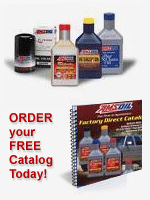









 Canada
Canada United States
United States
Paul said:
AMSOIL
I really enjoy the variety of articles that are posted. Keep up the good work!